#chateau gaillard
Explore tagged Tumblr posts
Text

1974 France, la Seine, les Andelys, Château Gaillard
#1974#France#la Seine#les Andelys#Chateau Gaillard#vintage#analog photography#film photography#1970s#photography#original photographers#blackandwhite#pierre wayser
10 notes
·
View notes
Photo
100 years ago:






Judex Georges Franju. 1963
Ruins Château-Gaillard, 27700 Les Andelys, France See in map
See in imdb
#old#postcard#chateau#castle#french#monument#ruin#vintage#patrimoine#les andelys#photography#architecture#photo#ruined#ruins#chateau gaillard#france#medieval#carte postale
40 notes
·
View notes
Text

The Solitude of the Night.' (c1930) Claude Francis Barry created a remarkably varied body of work always imbued with an individual poetic vision. This picture depicts a favourite place of his: the grounds of the Chateau Gaillard overlooking the Seine in Upper Normandy.
232 notes
·
View notes
Text
John being a menace at the family gathering at Chateau Gaillard, as one does
#the devil’s crown#the devils crown 1978#john duttine#simon gipps-kent#who btw is 20 in this which i searched up out of curiosity#also he died pretty young too?? RIP…#john i of england#arthur of brittany
4 notes
·
View notes
Text
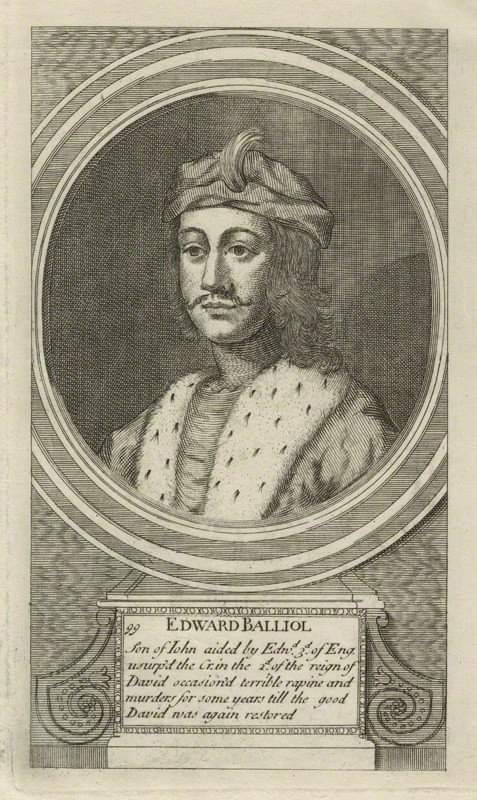
January 20th 1356 saw Edward Balliol surrender his claim to the Scottish throne to Edward III in exchange for an English pension.
Edward Balliol was born around 1283, the son of the deposed King John of Scotland and Isabella de Warenne, daughter of John de Warenne, 6th Earl of Surrey and his wife Alice de Lusignan, who was the maternal half-sister of King Henry III of England. Edward married Marguerite de Taranto, the daughter of Philip I, Prince of Taranto (d. 1332) they had no issue and the marriage was later annulled.
When his father was forced to abdicate by King Edward I of England in 1296, the younger Balliol was imprisoned with him in England. John Balliol died in exile in France in 1314, Edward Balliol then in France, was recalled to England by Edward II in 1324.
On the death of the great Robert the Bruce, his four year old son, David II, succeeded to the Scottish throne. The Regency passed to the two men the Bruce had entrusted with the guardianship of his young son, Sir James Douglas and Thomas Randolph. Douglas died shortly after in a skirmish in Spain and Randolph soon followed him to the grave.
lThe Regency then passed to the Robert's the Bruce's nephew, Donald, Earl of Mar. Edward Balliol still harboured dreams that he would one day occupy the Scottish throne, a position he considered to be his by right of birth. He received support from Edward III of England and landing on the coast of Fife he proceeded toward Perth. Mar met them in a bloody battle at Dupplin Moor and was killed in the action.
Edward Balliol was duly crowned Edward, King of Scots at Scone Abbey, but Sir Andrew Murray, appointed Guardian of Scotland by nobles loyal to the memory of Robert the Bruce ambushed him at Annan and drove him back into England. The regency during the minority of the young David Bruce was taken by another Douglas, Archibald, the brother of the previous Earl. Edward III now gave further support to Balliol, he declared the Treaty of Northampton null and void due to border reiving and marched on Berwick.
The Scots met the English invaders at the The Battle of Halidon Hill, where they suffered total defeat. Berwick was forced to surrender after a long siege and Balliol was restored to the Scottish throne. The young King David was promptly sent to France for his greater safety. Balliol paid homage to Edward III for his kingdom, destroying the Scots independence that Robert the Bruce had fought so long for.
Following the English victory at Halidon Hill the town of Berwick and the lands of the Borders and Lothian were ceded to Edward III by Edward Balliol. This ensured that warfare between the two countries would continue as the Scots fought to regain their lands. The young King David was sent to France for safety, where Phillip VI lodged him at Chateau Gaillard.
For twelve years thereafter, anarchy reigned in Scotland. When Edward III declared war on France, Phillip VI sent David Bruce back to Scotland in the hope of creating a diversion. David II entered Edinburgh in triumph, while Balliol fled to England leaving the throne open to his adversary.
After the defeat and capture of David II at the Battle of Neville's Cross on 17 October 1346, Balliol again invaded Scotland, leading an uprising in Galloway, but had no realistic hope of occupying the Scottish throne again. On 20th January, 1356 he surrendered his claim to the Scottish throne to Edward III, in exchange for an English pension. Edward Balliol died in 1367 at Wheatley, Doncaster, Yorkshire.
10 notes
·
View notes
Text
Honfleur to Pacy-sur-Eure
There is still a lot to see in Normandie but it is time we started heading south and got some cycling in before the Northern Beaches cyclists descend upon L’Escala. We will return one day to see the bits we missed.
Enroute we had our usual supermarket visit before continuing on to Les Andely and Chateau Gaillard. Chateau Gaillard was built by Richard the Lionheart. It’s called a chateau but it’s was more like a fort. Under the terms of the Treaty of Louviers (January 1196) between Richard and Philip II neither king was allowed to fortify the site. Richard went ahead and built it anyway.
His untimely death meant he didn’t really get to enjoy it as it is in a really lovely location. After his brother was defeated here the chateau went on to have further lives as a military installation before finally falling into disrepair. Nearby abbeys were given permission to use some of the materials to repair their own buildings. Thankfully in I think the 19th century it was declared a historical monument.
Les Andely and Petit Andely are lovely towns on the Seine with white cliffs in the background. It’s an area I’d definitely like to come back to.
Tonight we are parked in a free Aire in Pacy- Sur-Eure, that even provides electricity. We went for a walk into town after we’d parked but nothing was open. We’re assuming things will open later on but that didn’t help us in our quest for a coffee.
We had planned a nice, quiet night at Tessi but unfortunately the Beverly hillbillies arrived. They’re Irish and there must be at least 7 children. The parents insist on playing their music loud and singing along (badly) in between shouting at the kids. We do have a nice French guy beside us who is cycling back from Amsterdam. Luckily for him he is so tired he’ll probably sleep through it all 🙄
4 notes
·
View notes
Note
What is rex factor and where can I watch it? I looked it up but their last update is 4 years ago and they only have a hand full of videos
Yeah they’ve sort of abandoned their YouTube channel (and their website I think and basically all their social media lol)
Rex Factor is a podcast where they review all the Kings and Queens of England. It started with the English monarchs from Alfred the Great to Elizabeth II. Then, when they finished reviewing all of them, they did the Scottish monarchs from Kenneth MacAlpin to James VI & I. And when they finished that, they moved onto the English consorts from Eahlswith to Prince Phillip and they’re currently on Katheryn Howard and will be releasing their Kathryn Parr episode within the next few weeks. They also do other special episodes about all sorts of things from the Roman general Sulla to Chateau Gaillard to Aragorn from Lord of the Rings. The podcast has been going since 2010 so there are a couple hundred episodes to sink your teeth into. The first several episodes don’t have great sound quality but I promise it does get better. It’s really well researched but it’s also funny and entertaining—it’s one of my favorite podcasts and it’s the only one I actually financially support. I would definitely recommend it if you like podcasts.
8 notes
·
View notes
Text
Home late - thanks to Ciaran
We’re back home again after 67 days away - 24 hours later than intended after getting caught up in Storm Ciaran.
The storm hit Northern France hard and so we had to slightly change our plans. With Ciaran heading straight for us, we drove further than we intended on the penultimate day, to stay as close to the Channel Tunnel as possible for our last night. Then battered by strong winds and torrential rain, we crossed back into the U.K. and headed straight for a night at the Drum Inn pub in Ashford where we began our journey two months earlier, to let the storm pass.
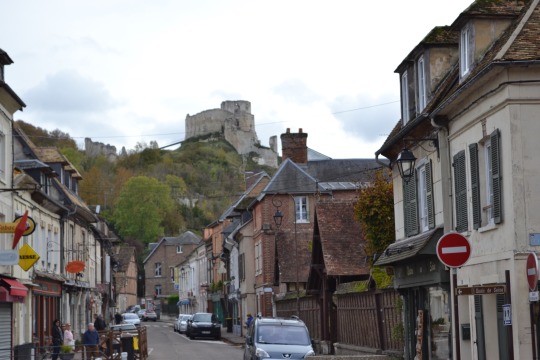
Our last few days in France had been at a little village in Normandy - Les Andelys - on the banks of the River Seine and just 60 miles from Paris. The village was charming and a favourite stop for river cruise ships making their way through France. Having camped close to the shipping lane in Venice, we now found ourselves staying close to the shipping lane for river cruises in Les Andelys.

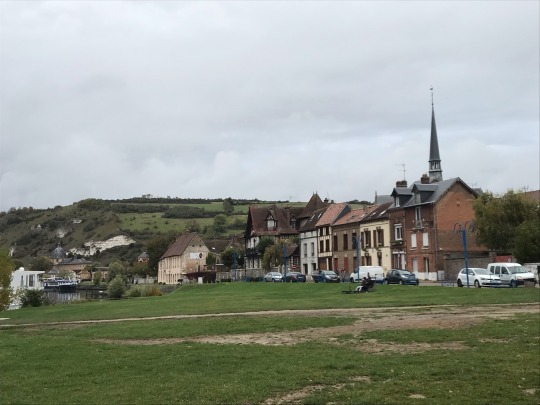

There were dozens of Americans spending their dollars here and the shops were geared up to catch these tourists. We prefer the natural and historic wonders, however, rather than those found on the High Street, so we headed for the ruin of the Chateau Gaillard that stands above the village. Building of the chateau began in 1196 under the auspices of Richard the Lionheart, who was simultaneously King of England and feudal Duke of Normandy.

The castle is listed as an historic monument and most of it is now in ruins but the inner Bailey is open to the public. You guessed it - we climbed up to the chateau and discovered it was the only day in the week when it was closed! We were able to explore the ruins, however, and enjoy the fabulous views across the river and surrounding countryside. It was well worth the climb.
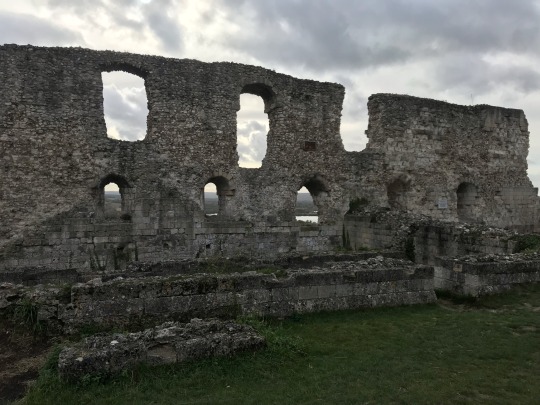
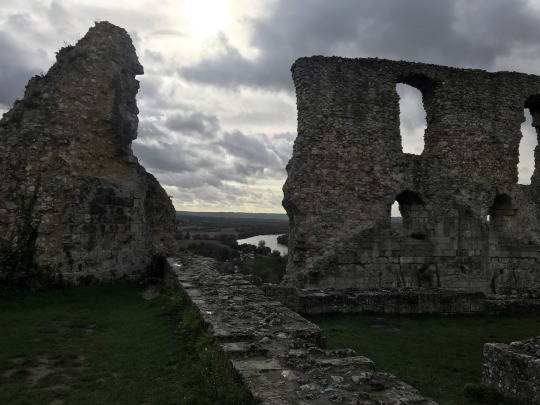
Our drive through the Normandy towns and villages on our journey home- deliberately avoiding the sterile motorways - was so interesting with the trees showing off their stunning autumn colours. This has definitely been the most amazing trip.

We have driven almost 3,000 miles across Belgium and Luxembourg into Switzerland, Northern Italy and Southern and Northern France.
We have visited nine cities and numerous towns and villages and three spectacular lakes.
We have marvelled at eight Cathedrals, numerous parish churches, chateaux, ancient bridges and historic buildings.
We have visited bears, watched flamingoes in flight, seen herons go fishing and dodged a snake in the lake.
We have travelled miles on public transport - bus, train, ferry, boat and tram - and our bikes.
We have walked more than 450,000 steps.
We have eaten far too much gelato and too many cakes and drank too much wine and our fair share of cocktails.
But most importantly, we have visited Northern Italy which we have been wanting to do for years and spent time back in one of our favourite regions, the South of France.

We have met so many new people and helped a lovely French couple find their way to their friends’ house before being invited to spend the afternoon with them, even though they didn’t speak a word of English. Absolutely priceless.
And along the way, we have learnt some Italian and embarrassed ourselves enough in French that our grasp of the language must have improved - surely?
Now it’s time to give Big Boy a well deserved rest until our next great adventure.
0 notes
Text

10-360 Astronome mais déserteur
https://soundcloud.com/jlgaillard/astronome-mais-deserteur
William Herschel, Hanovrien vivant en Angleterre au XVIIIème siècle, musicien de renom, fut aussi un célèbre astronome qui construisit un télescope par le moyen duquel il découvrit la planète Uranus. Quand le roi d’Angleterre, George III, qui s’intéressait aux questions scientifiques, l’apprit, l’astronome reçut l’ordre de se présenter au château de Windsor. Il s’y rendit avec son télescope.
Cependant, Herschel traînait derrière lui une grave faute qu’il croyait ignorée : il avait autrefois servi dans la garde royale, puis avait déserté. C’était, à l’époque, un crime passible de mort.
L’astronome fut introduit en présence du roi ; une foule nombreuse était réunie dans les salons du château. Le roi le salua brièvement : « Monsieur, avant que nous ne parlions d’astronomie, nous avons une petite affaire à liquider ».
Et il tendit à Herschel une lettre cachetée du sceau royal. A son extrême stupéfaction, le savant y trouva, écrite de la main du roi, une déclaration par laquelle il recevait plein pardon pour la faute qu’il avait commise. Aux yeux de la loi, il n’était plus coupable. Le roi l’acquittait. Son cas se trouvait définitivement réglé.
Les hommes portent le fardeau de leurs péchés. Du point de vue de la loi divine, ils sont condamnés. Mais le Fils de Dieu en a subi le châtiment et Dieu acquitte entièrement celui qui le croit simplement.
Il n’y a donc maintenant aucune condamnation pour ceux qui sont en Jésus-Christ, qui marchent, non selon la chair, mais selon l’esprit, Romains 8 : 1.
#williamherschel #herschel #anglais #musicien #astronome #astronomie #telescope #planete #roi #king #scientifique #science #chateau #windsor #mort #peine #lettre #pardon #faute #fardeau #péchés #divine #condamné #filsdedieu #fils #dieu #acquitté #croire #amour #compassion
Jean-Louis Gaillard
www.365histoires.com
www.jlgaillard.fr
0 notes
Text
MUSEO IRREVERENTES: “Le Chateau Gaillard et la place des Andelys” (1924)
Félix Vallotton (1865-1925)Óleo sobre lienzo100 cm x 73 cmMusée de Vernon (Vernon, Francia)

View On WordPress
1 note
·
View note
Photo

Philip Connard (1875-1958, British) ~ Château Gaillard, n/d
[Source: Art UK]
8 notes
·
View notes
Text

1974 France, la Seine, les Andelys, château Gaillard
#1974#France#les Andelys#La Seine#Chateau-Gaillard#vintage#analog photography#film photography#1970s#photography#original photographers#blackandwhite#pierre wayser
12 notes
·
View notes
Text
Richard the Lionheart, 1195:
Man, these last couple of years have been fucked up
I must redouble my war effort in England and France and take my castles back from Philip and John
Imma build a new castle to defend Rouen
It will be large and innovative, and cost twice as much as all my other castles combined
And I’ll call it
Saucy Castle :)
#richard the lionheart#richard plantagenet#richard i#richard cœur de lion#richard coeur de lion#saucy castle#chateau gaillard#chateau gâillard#medieval europe#medieval england#medieval france#philip ii#king richard i#history shitposting#medieval history shitpost#perpetual notions
15 notes
·
View notes
Text

The Solitude of the Night.' (c1930) Claude Francis Barry created a remarkably varied body of work always imbued with an individual poetic vision. This picture depicts a favourite place of his: the grounds of the Chateau Gaillard overlooking the Seine in Upper Normandy.
6 notes
·
View notes
Text

Did some doodles of Richard in his later years as described by the accounts Jean Flori references in his book, which all in all seems to add up to him being "solidly built", similar to Henry in his energetic temperament and manner, weirdly tall, weirdly pale, and who put on more weight in the latter half of his life.
Most of the later period was spent feuding with Philip over territories, wherein he built Chateau Gaillard and met his end with an infected wound from an arrow shot at Châlus.
#Richard the lionheart#Philip Augustus#Richard Lionheart#12th century#Jean flori#Medieval#Historical art#Richiliippe#Sort of. Their old man yaoi era
7 notes
·
View notes
Text
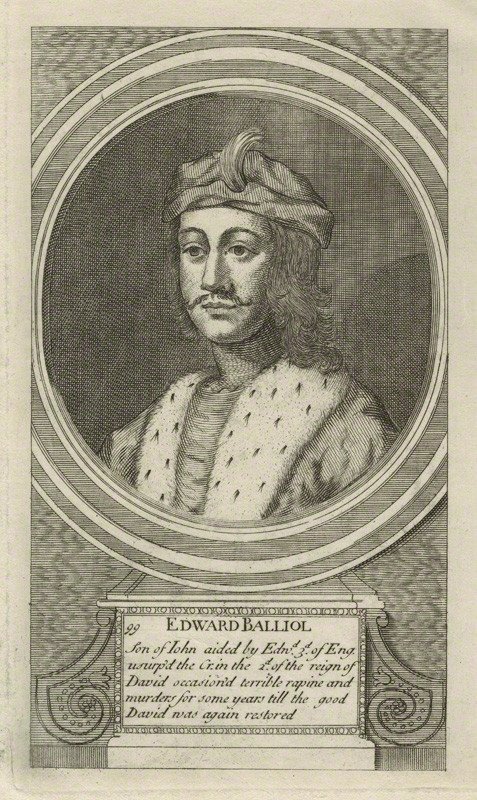
January 20th 1356 saw Edward Balliol surrender his claim to the Scottish throne to Edward III in exchange for an English pension.
Edward Balliol was born around 1283, the son of the deposed King John of Scotland and Isabella de Warenne, daughter of John de Warenne, 6th Earl of Surrey and his wife Alice de Lusignan, who was the maternal half-sister of King Henry III of England. Edward married Marguerite de Taranto, the daughter of Philip I, Prince of Taranto (d. 1332) they had no issue and the marriage was later annulled.
When his father was forced to abdicate by King Edward I of England in 1296, the younger Balliol was imprisoned with him in England. John Balliol died in exile in France in 1314, Edward Balliol then in France, was recalled to England by Edward II in 1324.
On the death of the great Robert the Bruce, his four year old son, David II, succeeded to the Scottish throne. The Regency passed to the two men the Bruce had entrusted with the guardianship of his young son, Sir James Douglas and Thomas Randolph. Douglas died shortly after in a skirmish in Spain and Randolph soon followed him to the grave.
lThe Regency then passed to the Robert's the Bruce's nephew, Donald, Earl of Mar. Edward Balliol still harboured dreams that he would one day occupy the Scottish throne, a position he considered to be his by right of birth. He received support from Edward III of England and landing on the coast of Fife he proceeded toward Perth. Mar met them in a bloody battle at Dupplin Moor and was killed in the action.
Edward Balliol was duly crowned Edward, King of Scots at Scone Abbey, but Sir Andrew Murray, appointed Guardian of Scotland by nobles loyal to the memory of Robert the Bruce ambushed him at Annan and drove him back into England. The regency during the minority of the young David Bruce was taken by another Douglas, Archibald, the brother of the previous Earl. Edward III now gave further support to Balliol, he declared the Treaty of Northampton null and void due to border reiving and marched on Berwick.
The Scots met the English invaders at the The Battle of Halidon Hill, where they suffered total defeat. Berwick was forced to surrender after a long siege and Balliol was restored to the Scottish throne. The young King David was promptly sent to France for his greater safety. Balliol paid homage to Edward III for his kingdom, destroying the Scots independence that Robert the Bruce had fought so long for.
Following the English victory at Halidon Hill the town of Berwick and the lands of the Borders and Lothian were ceded to Edward III by Edward Balliol. This ensured that warfare between the two countries would continue as the Scots fought to regain their lands. The young King David was sent to France for safety, where Phillip VI lodged him at Chateau Gaillard.
For twelve years thereafter, anarchy reigned in Scotland. When Edward III declared war on France, Phillip VI sent David Bruce back to Scotland in the hope of creating a diversion. David II entered Edinburgh in triumph, while Balliol fled to England leaving the throne open to his adversary.
After the defeat and capture of David II at the Battle of Neville's Cross on 17 October 1346, Balliol again invaded Scotland, leading an uprising in Galloway, but had no realistic hope of occupying the Scottish throne again. On 20th January, 1356 he surrendered his claim to the Scottish throne to Edward III, in exchange for an English pension. Edward Balliol died in 1367 at Wheatley, Doncaster, Yorkshire.
6 notes
·
View notes